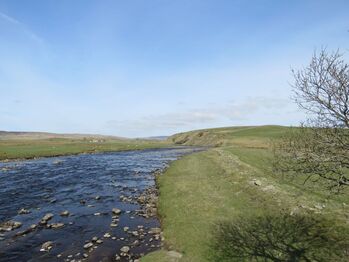 Confluence of River Tees and Harwood Beck
Confluence of River Tees and Harwood Beck
 Confluence of River Tees and Harwood Beck Confluence of River Tees and Harwood Beck Spring comes late at altitude, and in the North Pennines. Season and weather interact so the template is familiar but each spring is unique. It’s a time of transition, of departures and arrivals. Each morning, we hear fieldfare heading north to their summer breeding grounds in Scandinavia. Only now, this last week in April, come reports from south-west England of a steady passage of sand martin, swallow and house martin, most heading north east. We see our first swallow at Orton on 22nd April, hear our first cuckoo on Hadrian’s Wall four days later.
1 Comment
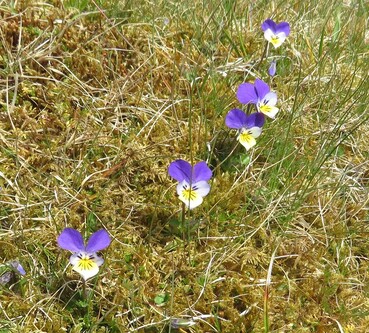 Viola tricolor, wild pansy, heartsease Viola tricolor, wild pansy, heartsease As a nature writer, I like to study an OS map for the natural history embedded in place names and landscape features. A history of natural history. Looking back on the day, I match our findings with what the map tells of habitat and species. Bents Sike is a burn flowing through boggy pastures of rush, sedge and rough grass. *Bents Head is the last intake bordering Moss Moor. Lapwing call all around us, in display flight descending with an audible clapping of wings. Snipe rise from sedges in zig-zag flight. Curlew are calling and a pair perches on a ruined sheepfold outlined against the sky. When they fly, a meadow pipit takes the stand. Songs of spring surround us. 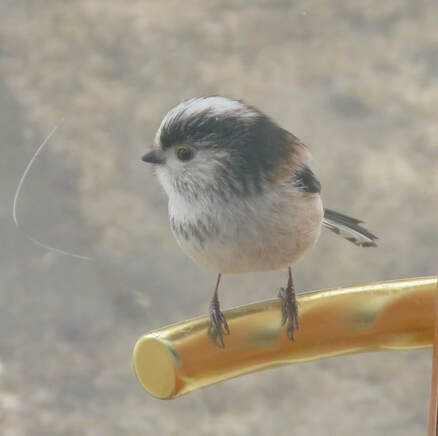 Long-tailed tit on the handle of the kitchen door Long-tailed tit on the handle of the kitchen door Sunrise at Ghyll Burn Cottage 22nd -29th April 2021 Ghyll Burn is a tributary of the River South Tyne and the cottage is a peaceful and secluded spot. It was an old stone barn, a lofty space with thick walls. deep embrasured windows and wooden beams. A flight of stone steps leads to the entrance and the kitchen on the first floor. The cottage sits within the shelter of the ghyll, with hawthorn rich in lichens and taller trees beyond; ash still in winter guise, sycamore close to leafing, birch and sitka spruce. 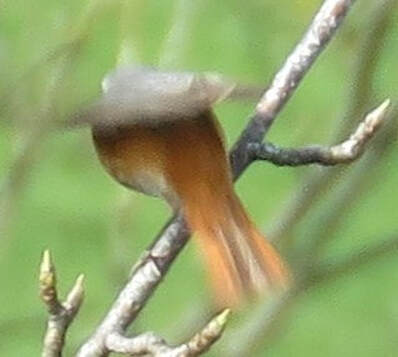 Male redstart displaying his tail feathers Male redstart displaying his tail feathers In shimmer and display, the male redstart fans out his flame-coloured tail feathers to impress a female. On spring migration, redstart always arrive here late April and often display from whitebeam, still in bud and rising above the escarpment cliff. He wants to be seen. And heard. The energy he puts into his song shows in his stance, his wide gape. He turns his head to broadcast his song. He flits from his display perch, tries another in the territory he hopes to secure, and back again. Once I've found a redstart I stay some time, looking and listening. It's an immersive experience, redstart song and lambs bleating. 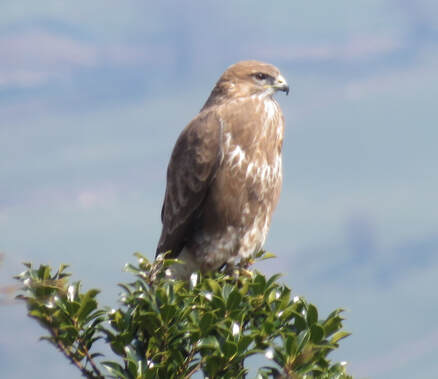 Buzzard in a holly tree Buzzard in a holly tree Lambs feed at their mother’s teats, tails waggling. Crossing Kendal Race Course, with a lively escort of lambs, I meet Angela and Chris, friends and former neighbours who have always supported my work as a nature writer. We miss them. Chris has a tale to tell and he’s been waiting eighteen months to share it with me. Alone and heading off Scout Scar, he heard a grunting coming from over the out-take wall and saw a large rabbit in the grip of a mustelid. Stoat or weasel he was unsure but a small mustelid had sunk its teeth into the back of the much larger rabbit’s neck, paralysing its hind legs. What a drama! 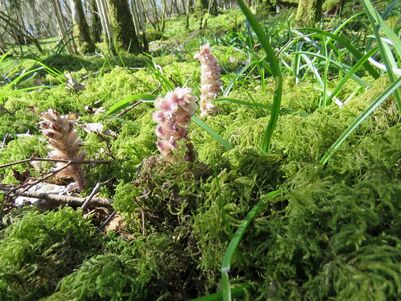 Toothwort, Lathraea squamaria Toothwort, Lathraea squamaria The last time I saw toothwort was 9th April 2014, in Howe Ridding Wood, And the flower was found by our guide Joe Murphy of Cumbria Wildlife Trust. Today, we discover toothwort for ourselves, which is even better. So, an interlude of looking closely to consider this parasitic plant's habit and habitat. What we see emerging from a thick and deep cushion of mosses strewn with dead twigs is merely the plant's flowering. New flowers appear close to the trunk of the host tree, disguised in mosses. 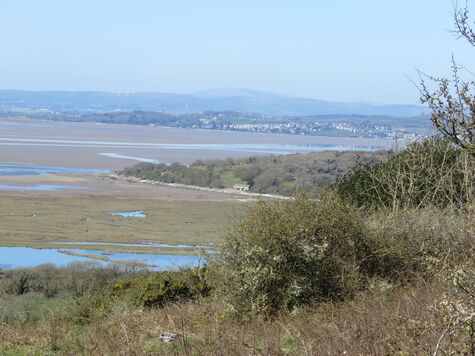 Jenny Brown's Point from Warton Crag Jenny Brown's Point from Warton Crag Strong sunlight illuminates the quarry face. Jackdaw are vocal in the tree tops nearby. And bass notes of raven sound as birds fly above and about the quarry cliff. Overhangs create shadows across the rock-face, clumps of gorse and vegetation grow on sheer rock, jagged with shadowy crevices and niches. When I find the raven's nest the surrounding rock throws shadows rather like the black raven itself. 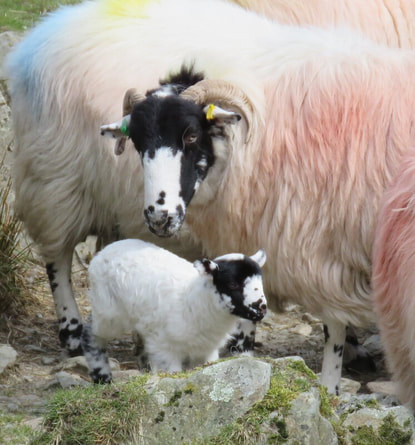 Rough Fell ewe and her lamb Rough Fell ewe and her lamb Sunrise gilds the Kentmere tops and down in the dale the puddled track is iced over. To be in Kentmere once more feels like a home-coming. It is lambing time and the rhythms of pastoral feel remote from the world beyond the dale. By Kentmere Hall, a farmer drives his quadbike through the pasture to deliver feed to heavily pregnant ewes. 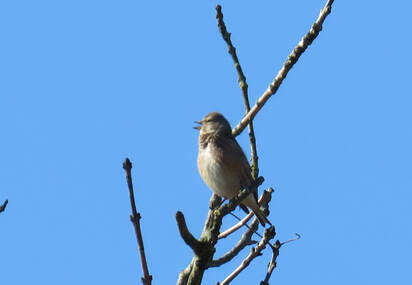 Male linnet singing Male linnet singing I heard the lovely song of linnet, just where I always find them. He sang high in an ash, by thick gorse and juniper. He was in full sunlight and through my binoculars I could see the crimson on his breast. My camera does not pick up the strong colour I saw, it's a question of how the light falls. A tiny bill and forked tail distinguish linnet, and his song. Willow warbler are returned and I've heard them the last couple of days. Chiff chaff have been singing a while. 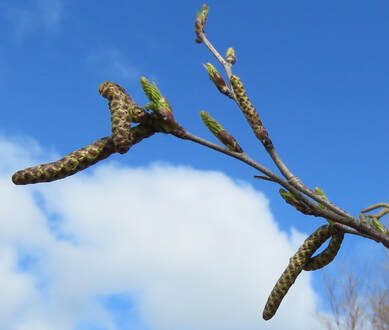 Male catkins and opening leaf buds, Downy Birch Male catkins and opening leaf buds, Downy Birch On a cold and bright April morning the male catkins of Downy birch are almost open. Leaf buds are opening too. On Helsington Barrows, there's a stand of Downy birch, trees of different ages. Young trees have glossy bark of purple red which slowly matures to white with papery layers. Horizontal lines show on the bark of young and mature trees. Dark branch scars show on the white trunk of a mature Downy birch, with the younger branch showing purple red. The strong morning sunlight shows these features clearly. 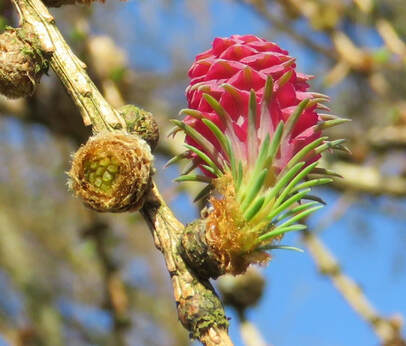 Flowers of Larix decidua, European larch Flowers of Larix decidua, European larch On a sunny Easter Saturday here;s a European Larch, Larix decidua, with an abundance of flowers. A leaf bud bursts to reveal fresh green needles, behind it a crimson female flower. To the left of the twig, the smaller, greenish male flower. The larch is thick with pine cones from last summer, and possibly from two summers past. The light is perfect so I show the detail of larch flowers, and their distribution in the tree. |
Archives
July 2024
Categories
All
|
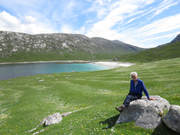
 RSS Feed
RSS Feed